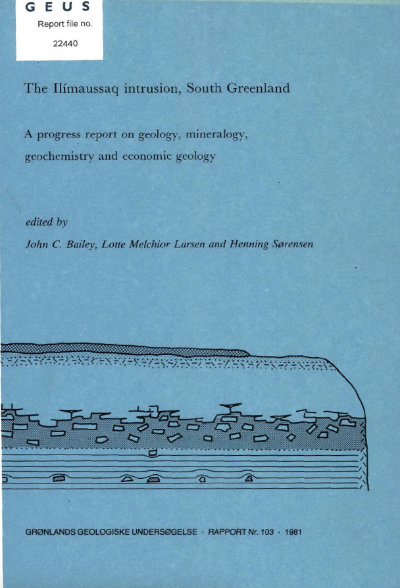Radioactive albitites bordering the Ilímaussaq complex: Agpat and Søndre Siorarssuit
DOI:
https://doi.org/10.34194/rapggu.v103.7739Abstract
In 1957, during the early uranium prospecting history in the Ilimaussaq intrusive complex, rich radioactive mineralisation was discovered at Agpat, on the south coast of Tunugdliarfik (Sørensen, 1957). The following year a number of radioactive samples were analysed at Risø and they proved to be mainly rich in thorium. A few of them, however, contained uranium in the order of 1000 ppm. In 1962 a 200 m deep hole was drilled in black lujavrite at the plateau 300 metres above sea level close to Agpat. The hole did not intersect radioactive mineralisation comparable to what was found at the coast, and the Agpat mineralisation attracted no further attention. During 1978 a field excursion for uranium geologists visited Agpat as an example of radioactive mineralisation at the border zone of the alkaline complex. The importance of the mineralisation was emphasised as it represents an epigenetic radioactive enrichment different from the refractory steenstrupine mineralisation in lujavrites. Transport of radioactive elements along the border of the complex mayaiso result in mineralisation in the surrounding supracrustal rocks, and the observations made at Agpat point to the sandstone and lava series of the Eriksfjord Formation as an important exploration target.
Downloads
Published
Issue
Section
License
This article is distributed under a CC-BY 4.0 licence, permitting free redistribution and reproduction for any purpose, even commercial, provided proper citation of the original work. Author(s) retain copyright over the article contents.


